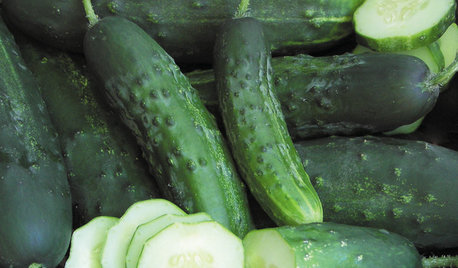How do you rotate crops in a home garden?
nygardener
13 years ago
Related Stories

GARDENING GUIDESSummer Crops: How to Grow Peppers
Some like 'em hot; others like them sweet. With the incredible range of peppers available for home gardens, you can have your pick
Full Story
GARDENING GUIDESOrganic Matters: Thwart Insect Pests With Trap Crops
Add a few sacrificial plants to your garden to lure insects away from the harvest
Full Story
EDIBLE GARDENSHow to Grow Your Own Sweet Summer Crops
This guide will help any gardener get started on growing the freshest warm-season veggies and berries for summer
Full Story
SPRING GARDENINGSummer Crops: How to Grow Strawberries
Pluck your own sweet strawberries right from the garden vine for smoothies, salads or eating then and there
Full Story
MOST POPULARSummer Crops: How to Grow Sunflowers
Savor snack-tastic sunflower seeds once the radiant blooms have faded — if the birds have saved you any, that is
Full Story
EDIBLE GARDENSSummer Crops: How to Grow Squash
Almost foolproof and with cheerful flowers, squash comes in a wide range of varieties to plant in spring
Full Story
SUMMER FRUITS AND VEGETABLESHow to Grow Your Own Fresh, Sweet Corn
Here's how to plant and care for your own mini cornfield
Full Story
EDIBLE GARDENSSummer Crops: How to Grow Tomatoes
Plant tomato seedlings in spring for one of the best tastes of summer, fresh from your backyard
Full Story
EDIBLE GARDENSSummer Crop: How to Grow Blueberries
Plant blueberries in spring or fall for garden beauty through three seasons — and a sweet superfood in summer
Full Story
SUMMER FRUITS AND VEGETABLESSummer Crops: How to Grow Cucumbers
Pick a peck for pickles or opt for fewer and raw — no matter how you slice them, cucumbers are great for summer gardens small to large
Full StoryMore Discussions







caroliniannjer
mister_potato_head
Related Professionals
Fort Lee Landscape Architects & Landscape Designers · Golden Gate Landscape Contractors · Norristown Landscape Contractors · Oxnard Landscape Contractors · Petaluma Landscape Contractors · Shoreview Landscape Contractors · Suitland Landscape Contractors · Woodbury Landscape Contractors · Chicago Ridge Landscape Contractors · Crowley Driveway Installation & Maintenance · Albany Driveway Installation & Maintenance · Conroe Driveway Installation & Maintenance · Des Plaines Driveway Installation & Maintenance · New Bedford Driveway Installation & Maintenance · Palm Desert Driveway Installation & Maintenanceviktoria5
viktoria5
wayne_5 zone 6a Central Indiana
gardningscomplicated
oldroser
Donna
coralb
calliope
susan2010
potterhead2
cabrita
borderbarb
Michael
MrClint
dancinglemons
tdscpa
jimster
MrClint
candogal
susan2010
glib